Hoi An was a port city in Vietnam with more than 2,000 years of history, where Chinese, Japanese, and European merchants shared trade and space. Muslims, Chinese, and Vietnamese passed through, making it a multicultural city that still reflects this rich mix in its streets and monuments.
In 1999, it was declared a UNESCO World Heritage Site, recognized for both its tangible and intangible heritage.
The Old Town of Hoi An, located on the banks of the Thu Bon River, is undoubtedly one of the most fascinating in all of Southeast Asia. It has endured history with minimal intervention, maintaining the original character of the 16th and 17th centuries, when it thrived as a commercial hub.
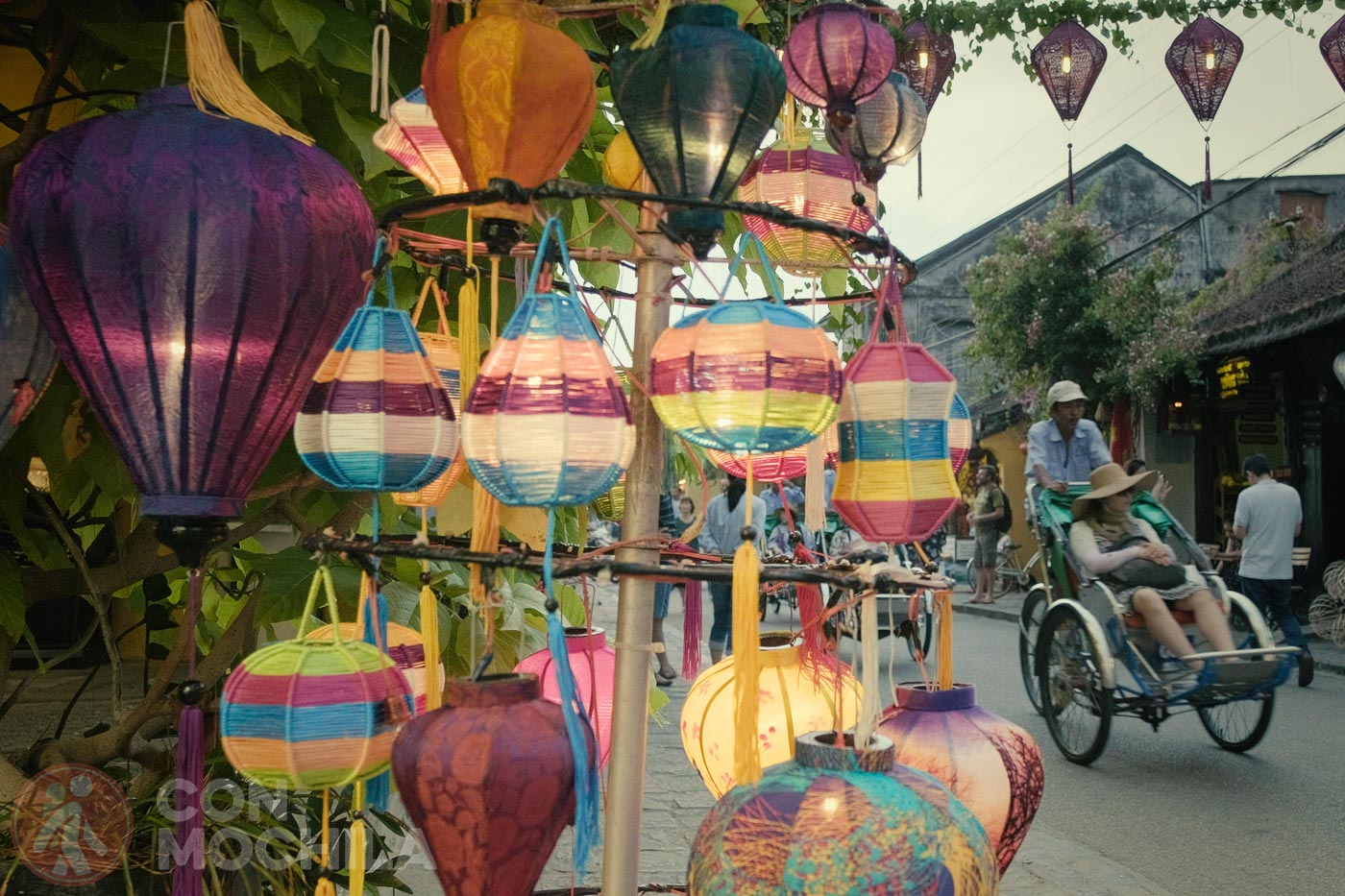
Cars are not allowed, so welcome to tranquility. You certainly won’t miss them! This is an ideal neighborhood for walking or cycling, you won’t need any other means of transport.
Two-story houses, colorful alleys to wander through, small shops selling handicrafts, tailor-made clothing services, and delicious local cuisine. If you’re in the mood for a bit of cultural tourism, you can also visit some historical landmarks.
Some monuments require an entrance fee, so we recommend purchasing a general ticket for 120,000 VND (just under 5 euros), which allows you to visit five sites of your choice. Among the points of interest, you’ll find historical buildings, museums, and old houses open to visitors.
Here are some highlights:
Built in the early 17th century, this iconic structure appears on the 20,000 VND banknote, making it one of Vietnam’s most recognizable landmarks. It connects Tran Phu Street and Nguyen Thi Minh Khai Street and is guarded by statues of a dog and a monkey.
You can learn more about its history here: Hoi An’s Japanese Covered Bridge, Another Gem of the City.
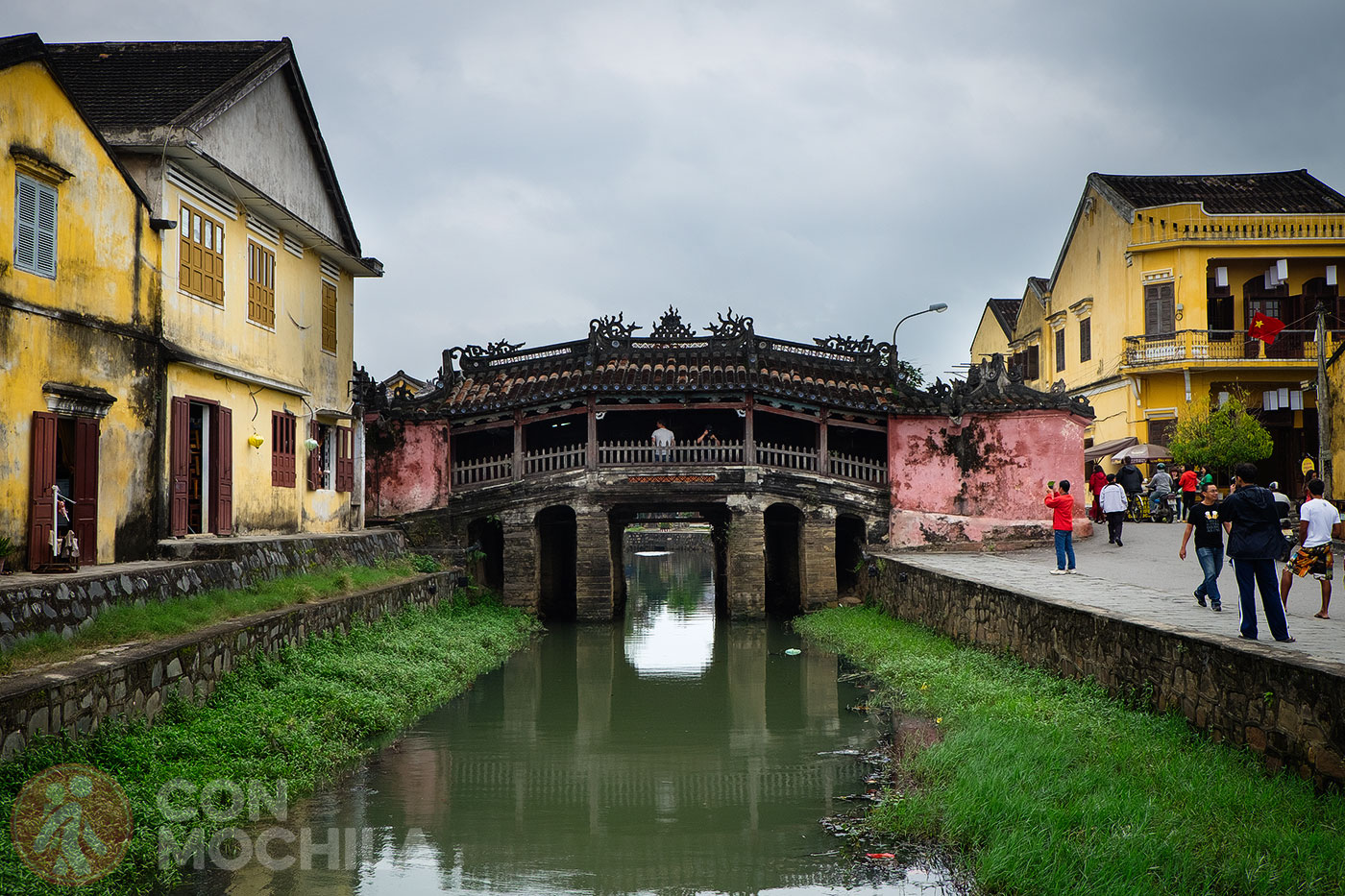
About 500 meters from the Japanese Bridge, you’ll find this 17th-century temple dedicated to the Han Dynasty general Quan Cong. It has been declared a National Cultural and Historical Site.
Recognizable by its pink bricks and green tiles, take your time to admire its intricate decorations featuring dragons and unicorns.
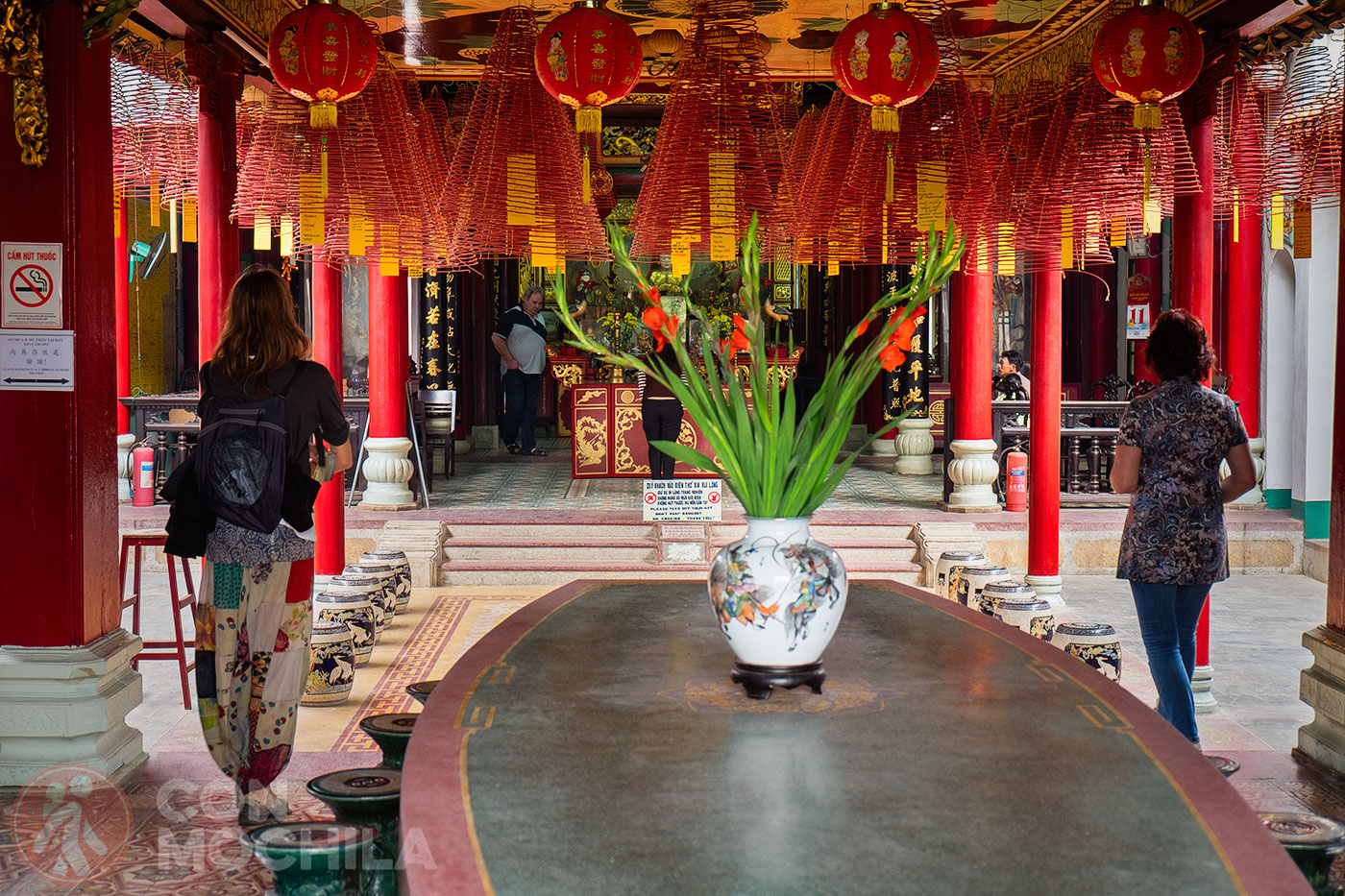
This historical house was built by a Vietnamese family and showcases both Chinese and Japanese influences. Exploring homes from past centuries always offers a fascinating glimpse into life in bygone eras.
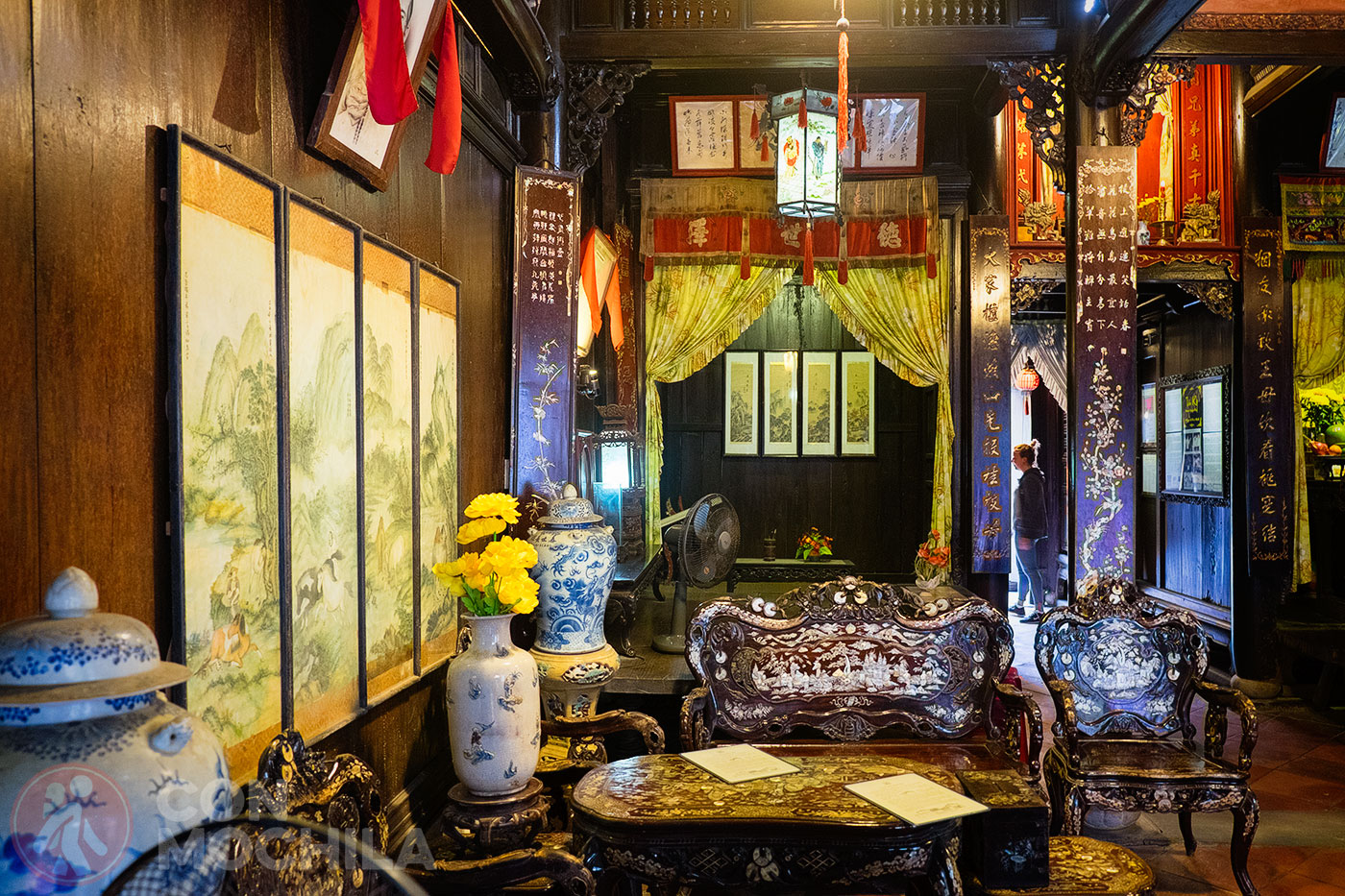
A lively local market packed with food stalls where residents buy their daily groceries. Here, colors and aromas blend as you pass by vendors. It’s also a great spot to try a bowl of Pho or fresh fruit juice.
To experience the true essence of the market, visit early in the morning to witness the arrival of the fishermen.

From 6 p.m. onwards, cross the bridge to An Hoi Island, just opposite the Old Town. Here, hundreds of colorful lanterns illuminate the streets, creating a magical atmosphere.
Located along the banks of the Hoai River, the night market is open daily until 11 p.m. and invites visitors to browse its numerous stalls selling souvenirs, street food, and small entertainments, including traditional Vietnamese games.
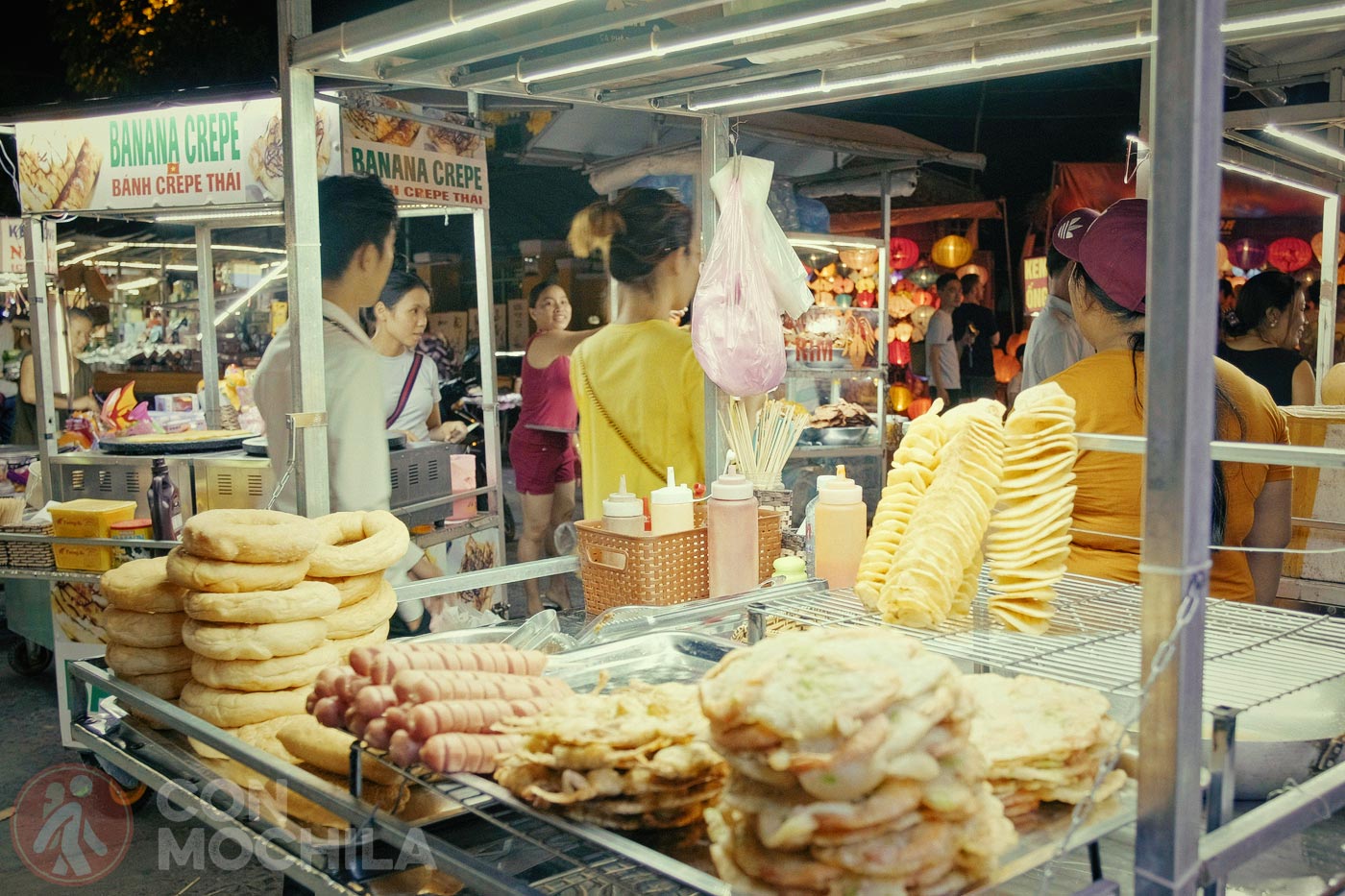
For market lovers, this one is a must-visit. Hoi An is famous for its fabrics and tailoring workshops, making it an excellent place to get a custom-made shirt or dress at a great price.
If you’re lucky enough to be in Hoi An on the 14th of any month, don’t miss the spectacular Legendary Night.
There are several activities you can enjoy in Hoi An’s Old Town. Here are some options so you can choose the one that interests you the most:
The city is easy to navigate, so the best option is to rent a bicycle or a motorbike to move from one place to another. This way, you can reach the beach or explore other parts of the city in just a few minutes.
If you plan to drive a motorbike or any other vehicle, we highly recommend obtaining an International Driving Permit in case you encounter checkpoints. Additionally, make sure you have travel insurance that covers accidents.
If you are coming from outside Hoi An, the most common way to arrive is via Da Nang, which is about 30 kilometers away. From there, you can take a bus or taxi to Hoi An.
To reach Da Nang from Ho Chi Minh City, flying is the most convenient option. The flight takes about one hour and costs between 50 and 80 euros, depending on when you book.
You can also travel by train or bus, but keep in mind that the journey covers approximately 1,000 kilometers and requires a significant time investment.
In any case, make sure to add Hoi An to your Vietnam itinerary, and consider staying at least one night to fully enjoy the lights and colors of its traditional lanterns.